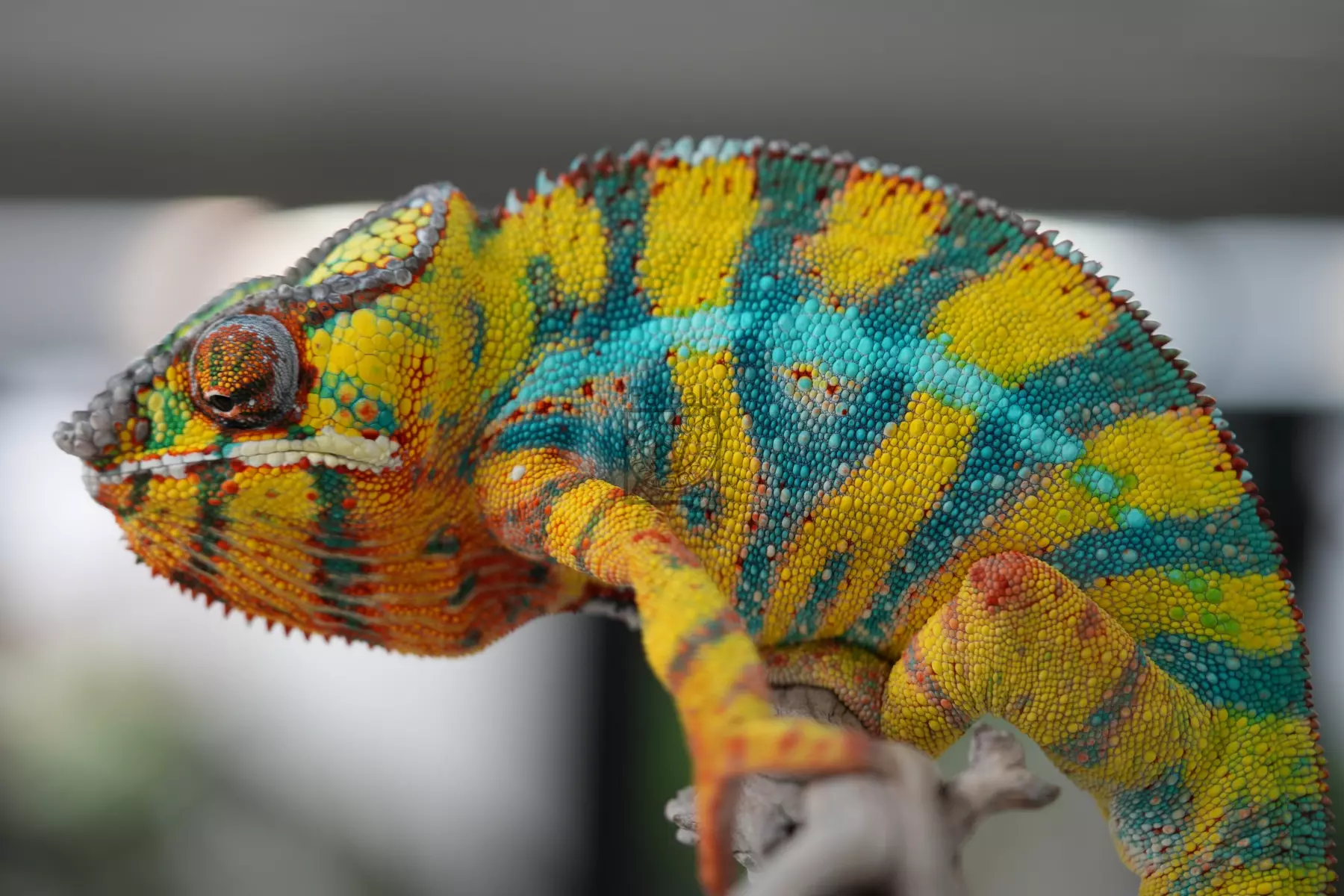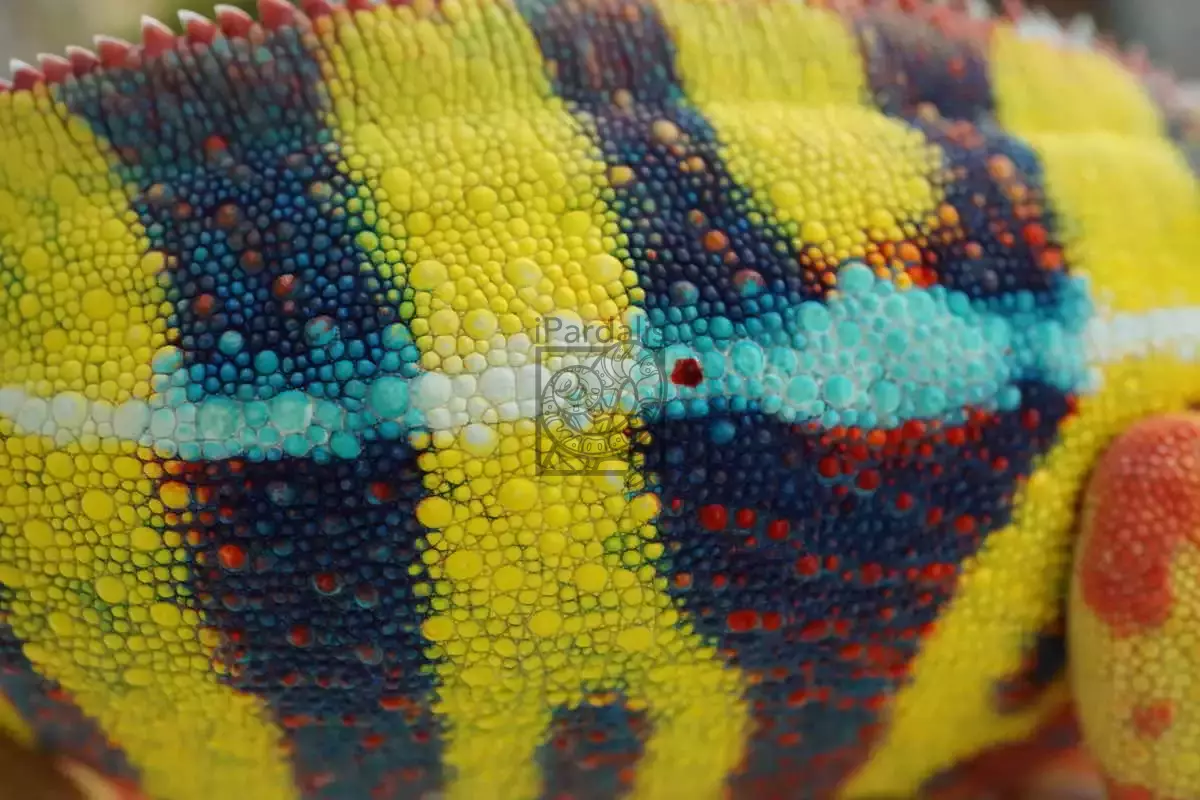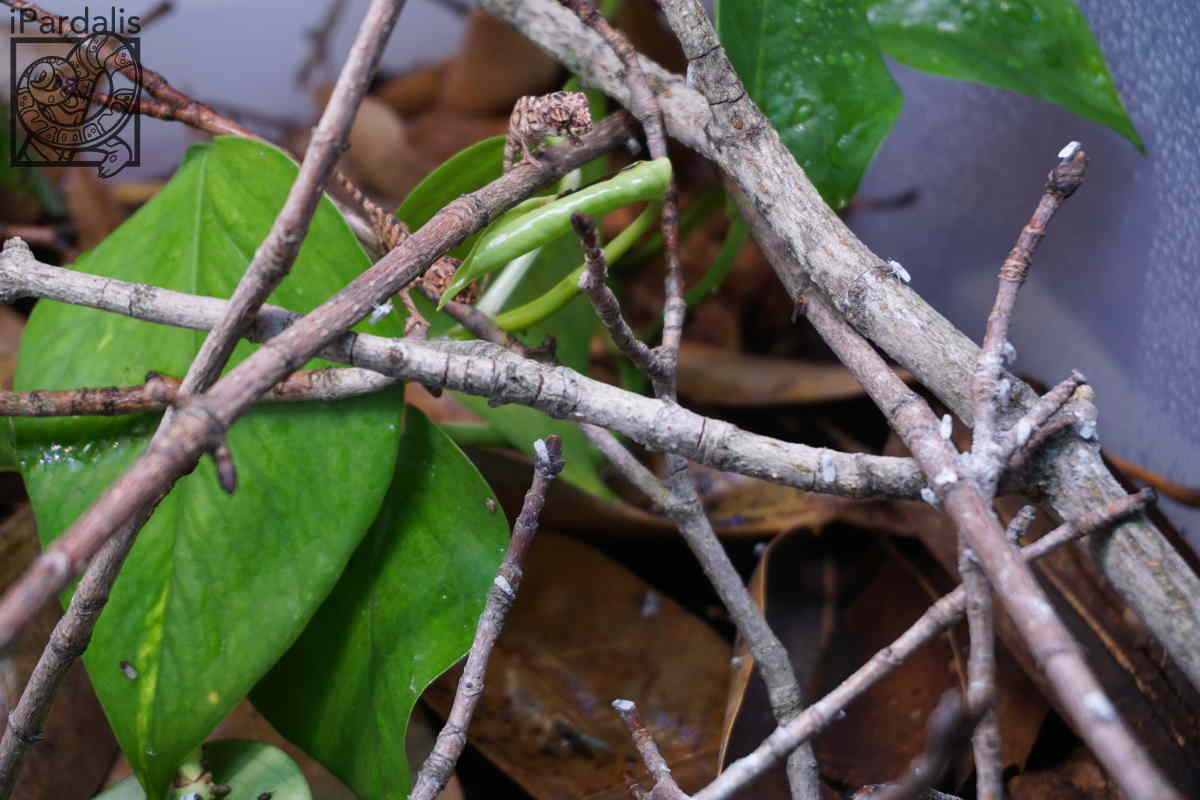Why should you individually-raise Baby Panther Chameleons?
How do you raise baby Panther Chameleons?
What are your favorite baby enclosures?
What are some common industry practices related to raising Panther Chameleons?
Before our Panther Chameleon breeding project started in 2015, most panther chameleon breeders housed their Furcifer pardalis hatchlings and juveniles in groups, large and small, where they had to fight for survival in an unnaturally competitive space.
In the wild, pardalis hatchlings quickly disperse into their own micro-habitats. They are solitary animals from day one. They prefer to communicate at a distance with some of nature’s most beautiful courtship and threat displays; however, when they cannot flee or show submissiveness in a small space, dominant animals will try to kill animals in their territory (male and female). Baby Panther Chameleons are very cute, but don’t be fooled. They may not be strong enough to hurt each other, but the intent is clear nonetheless.
Many breeders, like a kid clutching a Jackson’s chameleon at an expo, believe their baby panther chameleons are friendly because they misinterpret their stress response. In fact, they have given up. Baby Panther Chameleons will naturally want to remove themselves from stressful situations or competitive spaces with their siblings. This teaches them that they are helpless and should give up. They aren’t “friendly” - they are psychologically scarred. They should be given control so that they can develop the confidence they need to thrive with someone who respects their wants and needs.
Did you always raise your Panther Chameleons individually from day one?
In 2019, we experimented with raising our babies in bio bins for the first month before breaking them out into their individual enclosures. We laid down multiple soil layers (drainage, abg & leaf) and 3 - 4 species of insects in every bin. That included temperate/tropical spring tails, dwarf white isopods, zebra isopods, and powder orange isopods. These insects spend a lot of time in the soil, so my thought was that they provide a good option for the babies along with fruit flies, silk worms, horn worms and bean beetles.
At the end of a month, we moved them all into individual nursery cages and provide gut-loaded crickets, horn worms, silk worms, dubia roaches and various species of larger flies (black soldier, blue bottle and house flies). This basic technique was used on each of our 2019 clutches. We hatched 160 babies in 2019. One was tragically killed in an accident and two passed away at only a few days old (my guess is that was due to asphyxiation from water droplets that weighed their bodies down).
Many breeders do not share their techniques or failures, so it is difficult to gauge how this compares. However, I am very happy with 98.1% reaching the 3 month mark. This compares favorably to our 2017 clutch, which was not raised in bio bins and only 69.2% reached the 3 month mark. Since 2020, we have started them in their individual nursery environments from day 1. Survival rates have bounced around between 0% for failed clutches and 100% for most clutches that hatch out strong.
What we learned from our experience raising baby panther chameleons under various methods
Where can I learn more about raising baby Panther Chameleons?
Frequently Asked Questions Back






